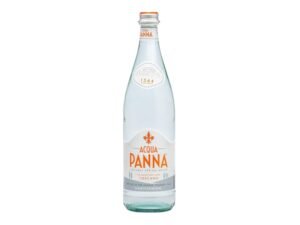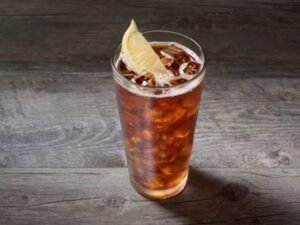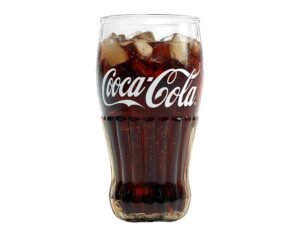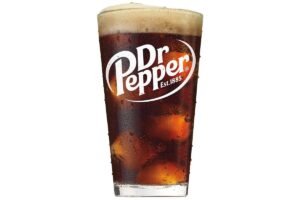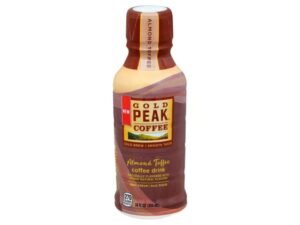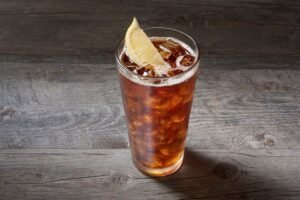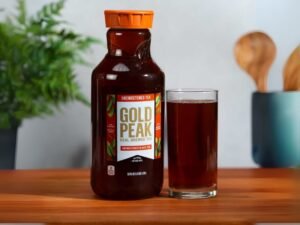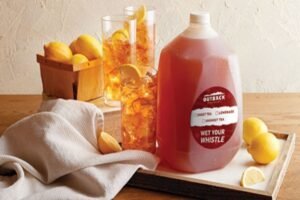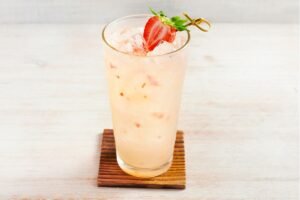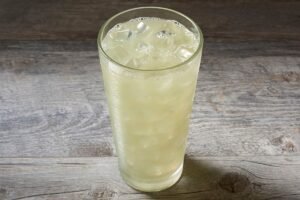The non-alcoholic beverage menu at Outback handles a surprising amount of heavy lifting. These drinks aren’t just thirst quenchers between bites of steak – they’re profit centers that require minimal labor, essential for non-drinkers who still want something special, and often the deciding factor for families choosing between restaurant options. A robust soft drink selection keeps everyone happy, from the designated driver to the pregnant woman craving something more interesting than water.
What sets Outback’s beverage program apart isn’t revolutionary variety but thoughtful execution. Fresh-brewed iced tea that actually tastes like tea, not brown water. Lemonades made with real lemon juice. Soft drinks from fountains calibrated weekly to maintain perfect syrup ratios. These details matter more than most realize.
The Iced Tea Excellence
Outback’s iced tea program deserves recognition for achieving what most restaurants fail at spectacularly. The tea gets brewed fresh every 2 hours using a specific process that extracts maximum flavor without bitterness. Water temperature hits exactly 195°F – hot enough for proper extraction but not boiling which releases tannins.
The steeping time runs precisely 4 minutes for regular, 3 minutes for sweet tea (sugar interferes with extraction). Each batch uses 3 ounces of Orange Pekoe tea leaves, not the fannings and dust in commercial tea bags. The leaves come from Sri Lankan estates, chosen for natural sweetness that works both sweetened and unsweetened.
Sweet tea follows Southern tradition with sugar added while hot for complete dissolution. The ratio – 1.5 cups sugar per gallon – hits the sweet spot between Southern diabetes-water and Yankee barely-sweet disappointment. The sugar goes in at 180°F, stirred for 90 seconds ensuring no granulation.
The storage matters too. Tea stays in stainless steel containers, never plastic that absorbs flavors. Temperature maintains between 35-38°F, cold enough for refreshment but not so cold that flavor mutes. After 4 hours, remaining tea gets tossed regardless of amount left – oxidation creates off-flavors that discerning tea drinkers notice.
Lemonade From Scratch Reality
Every Outback location makes lemonade from scratch daily, a labor-intensive process most chains abandoned for concentrate years ago. The morning prep involves juicing 50-60 lemons, yielding about 2 quarts of juice. Mechanical juicers extract maximum juice while avoiding bitter pith oils.
Simple syrup gets made separately – 2 parts sugar to 1 part water, heated until dissolved then cooled. This creates better integration than adding granulated sugar directly. The final mixture combines 1 part lemon juice, 1 part simple syrup, and 4 parts water. This ratio provides tartness that stands up to ice dilution.
Premium lemonades build on this base. Strawberry versions use fresh strawberries when available (May through September), frozen purée otherwise. Each glass gets muddled fruit for texture and visual appeal. The muddling happens to order – pre-muddled fruit oxidizes and browns within hours.
The effort shows in sales. Lemonade and variants account for 15% of non-alcoholic beverage sales despite premium pricing. Customers willingly pay $4.99 for strawberry lemonade when $3.99 unlimited-refill soda exists because they recognize real fruit and fresh preparation.
Fountain Drink Precision
Fountain beverages seem simple but require surprising attention. Outback calibrates fountain machines weekly, checking syrup-to-carbonation ratios. The standard 5:1 ratio gets adjusted slightly – Coca-Cola runs 5.2:1 for extra flavor, Diet Coke at 4.8:1 preventing artificial sweetener overload.
Carbonation levels matter enormously. Too little and drinks taste flat and syrupy. Too much creates harsh bite that overwhelms flavor. The target sits at 3.8-4.0 volumes of CO2, checked using specialized meters. Ice machines connect directly to fountains, ensuring drinks arrive at optimal 33-35°F temperature.
The ice itself gets attention. Outback uses nugget ice (like Sonic), which absorbs flavors better than cube ice while melting slower than crushed. The ice-to-drink ratio targets 40% ice, providing cooling without excessive dilution. Servers get trained on proper filling – ice first, then beverage poured over to minimize foaming.
Cleaning protocols prevent the syrup line buildup that makes fountain drinks taste “off” at poorly maintained restaurants. Lines get flushed daily, nozzles disassembled and sanitized nightly. The difference shows – Outback’s fountain Coke consistently ranks among best in casual dining surveys.
Kids’ Beverage Psychology
Children’s drink orders follow predictable patterns that inform preparation. Sprite leads at 35% of kids’ drinks, followed by lemonade (25%), apple juice (20%), Shirley Temples (10%), milk (5%), and water (5%). Understanding these preferences drives inventory and prep decisions.
The Shirley Temple phenomenon extends beyond simple grenadine and Sprite. Outback’s version uses specific proportions – 1 ounce grenadine to 8 ounces Sprite – creating consistent pink color kids expect. Too little grenadine disappoints, too much overwhelms with sweetness. The cherry must be maraschino with stem, allowing dramatic removal kids enjoy.
Chocolate milk gets made to order using Hershey’s syrup, not pre-mixed. This allows customization – some kids want barely chocolate, others want spoons-stand-up thick. The made-to-order approach reduces waste while accommodating preferences.
Refill policies for kids differ from adults. Juice and milk don’t get free refills, preventing sugar overload and managing costs. However, servers often provide “splash more” top-offs that keep kids happy without full refills. This flexibility prevents meltdowns while controlling expenses.
The Mocktail Movement
Virgin cocktails gained serious traction as non-drinkers seek interesting options beyond soda. These drinks use same fresh ingredients and preparation as alcoholic versions, just minus the booze. The presentation matches too – proper glassware, garnishes, and straws that make non-drinkers feel included.
The Virgin Piña Colada uses real coconut cream (not mix), fresh pineapple juice, and gets blended with same consistency as alcoholic version. The key lies in proportion – too much coconut becomes cloying, too much pineapple turns acidic. The sweet spot hits 2:3 coconut to pineapple ratio.
Virgin Strawberry Daiquiris require fresh strawberries (or high-quality frozen), fresh lime juice, and simple syrup. The blending technique matters – 30 seconds on high creates proper consistency without over-processing that introduces unwanted air. Lime juice gets added last to preserve brightness.
These mocktails price at $5.99, seeming expensive for non-alcoholic drinks but justified through fresh ingredients and labor. Pregnant women, designated drivers, and non-drinkers happily pay for special drinks that don’t make them feel excluded from celebration.
Coffee Quality Surprise
Nobody expects good coffee at a steakhouse, yet Outback delivers respectable java. The Rainforest Alliance certification ensures ethical sourcing while maintaining quality. Beans arrive weekly, pre-ground for consistency but fresh enough to maintain flavor.
Brewing happens every 30 minutes regardless of consumption. Old coffee gets dumped, never served. The brewing temperature hits 200°F, optimal for extraction without burning. Each pot uses exact measurements – 2.5 ounces coffee per 64-ounce pot – creating consistent strength.
Cream arrives in individual sealed containers, not communal pitchers that risk contamination. Sugar options include raw, white, and artificial sweeteners in individual packets. The coffee station stays stocked and clean, preventing the sad abandoned feeling of many restaurant coffee services.
Decaf receives equal attention, not the afterthought treatment elsewhere. Same quality beans, same brewing standards, just dedicated equipment preventing caffeine contamination. The orange-handled pot universally signals decaf, preventing unfortunate mix-ups.
Seasonal Beverage Rotations
Summer brings expanded lemonade varieties and iced tea flavors. Watermelon lemonade appears June through August using fresh watermelon juice. Passion fruit iced tea shows up in tropical markets. These seasonal options use actual fruit, not flavorings, creating authentic tastes that justify premium pricing.
Fall introduces apple cider (hot and cold), pumpkin spice additions to coffee, and cranberry juice cocktails. The apple cider comes from regional orchards when possible, creating local connection. Hot cider gets mulling spices added individually, not from packets.
Winter features hot chocolate upgrades – peppermint, salted caramel, and Mexican chocolate versions. Each uses base hot chocolate enhanced with real ingredients. Candy cane stirrers, caramel drizzle, or cinnamon and chili create distinct profiles worth ordering.
Spring brings floral and herb additions – lavender lemonade, mint iced tea, elderflower sparklers. These lighter flavors appeal after heavy winter eating. The ingredients often come from local suppliers, creating freshness and community connection.
The Water Service Standard
Even free water gets attention at Outback. Servers bring water automatically to tables, not waiting for requests. The water gets filtered through commercial systems removing chlorine taste. Ice comes standard unless requested otherwise.
Lemon wedges arrive on separate plates, not floating in water where they might not be wanted. The wedges get cut fresh daily, not sitting in containers growing bacteria. Each wedge receives seeds removed, preventing bitter oils from contaminating water.
Sparkling water options include Perrier and San Pellegrino at premium prices. These arrive in bottles, not from guns that might compromise carbonation. The European branding makes people feel sophisticated ordering fizzy water at a steakhouse.
Temperature and Glassware Standards
Each beverage type requires specific glassware and serving temperature. Sodas arrive in 20-ounce glasses allowing room for ice without constant refills. Lemonades come in Mason jars that Instagram well while providing generous portions. Coffee uses heavy ceramic mugs that retain heat.
Temperature standards get strictly maintained. Cold beverages must be 33-38°F at service. Hot beverages maintain 155-165°F for safety and satisfaction. These temperatures get checked multiple times per shift using digital thermometers.
Glass freezing for certain beverages adds perceived value. Frozen mugs for root beer create nostalgic appeal. Chilled glasses for lemonades maintain temperature longer. The small detail of frosted glass makes standard drinks feel special.
Beverage Timing and Service Flow
Drink orders get taken immediately upon seating, arriving within 2 minutes. This immediate satisfaction starts meals positively while buying decision time for food orders. Refills happen proactively – servers watch for glasses hitting 1/3 full, not waiting for requests.
The beverage course serves strategic purposes beyond hydration. It provides immediate gratification preventing hangry waiting. Generates quick revenue while tables decide on food. Creates service touchpoints maintaining server presence without hovering.
Timing with food service requires coordination. Fresh drinks arrive just before appetizers, ensuring cold beverages for hot food. Refills happen during entrée delivery, preventing interruption while eating. Coffee offers come with dessert menus, suggesting meal extension.
